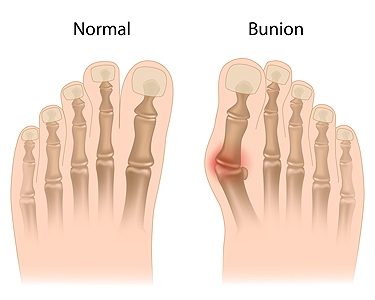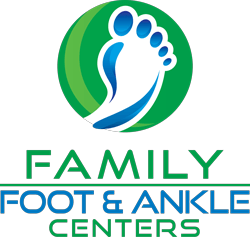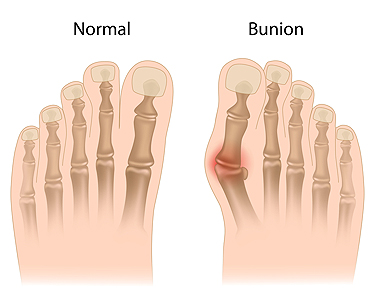Men and Bunions

A bunion is identified as a bony protrusion that gradually forms on the side of the big toe. It affects women more than men, and this may be a result of the type of shoes that are frequently worn. High heels fall into this category, because they have little room for the toes to move freely in. Limiting the time wearing high heels is suggested. If medical attention is not sought, the growing bunion can cause the other toes to shift toward each other, and larger shoes may need to be purchased. Research has shown that men are also affected by bunions, most commonly due to genetic reasons. Foot structure and bunions tend to run in families, and it is beneficial for men to be aware of the type of shoes they choose to wear. Effective prevention methods include buying shoes that can adequately accommodate the width of the toes. If you have a bunion, it is suggested that you consult with a podiatrist who can determine what the right course of treatment is for you.
If you are suffering from bunion pain, contact one of our podiatrists of Family Foot & Ankle Centers. Our doctors can provide the care you need to keep you pain-free and on your feet.
What Is a Bunion?
Bunions are painful bony bumps that usually develop on the inside of the foot at the joint of the big toe. As the deformity increases over time, it may become painful to walk and wear shoes. Women are more likely to exacerbate existing bunions since they often wear tight, narrow shoes that shift their toes together. Bunion pain can be relieved by wearing wider shoes with enough room for the toes.
Causes
- Genetics – some people inherit feet that are more prone to bunion development
- Inflammatory Conditions – rheumatoid arthritis and polio may cause bunion development
Symptoms
- Redness and inflammation
- Pain and tenderness
- Callus or corns on the bump
- Restricted motion in the big toe
In order to diagnose your bunion, your podiatrist may ask about your medical history, symptoms, and general health. Your doctor might also order an x-ray to take a closer look at your feet. Nonsurgical treatment options include orthotics, padding, icing, changes in footwear, and medication. If nonsurgical treatments don’t alleviate your bunion pain, surgery may be necessary.
If you have any questions, please feel free to contact one of our offices located in Corsicana, Ennis, and Waxahachie, TX . We offer the newest diagnostic and treatment technologies for all your foot care needs.
The information provided in this article is not meant to be medical advice and is for educational purposes only. If you would like to learn more about topics related to podiatry, feel free to contact Family Foot & Ankle Centers by clicking here or calling 972-597-4132 to reach our Waxahachie office, 903-872-9910 to reach our Corsicana office, or 972-875-3668 to reach our Ennis office.



